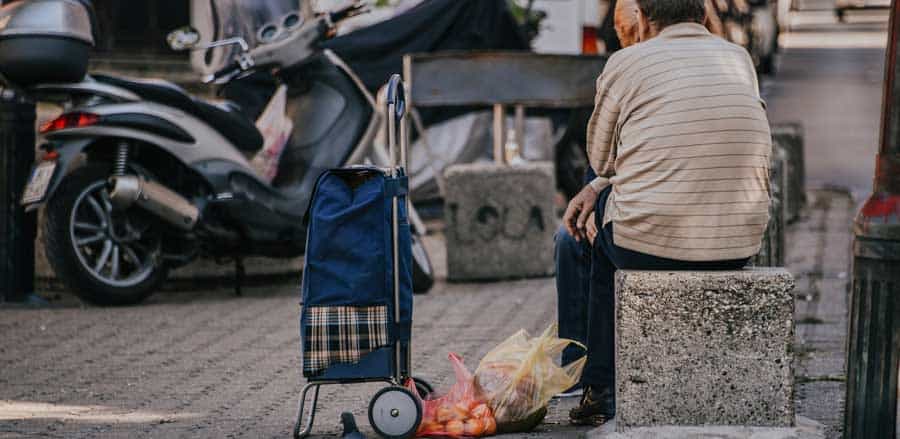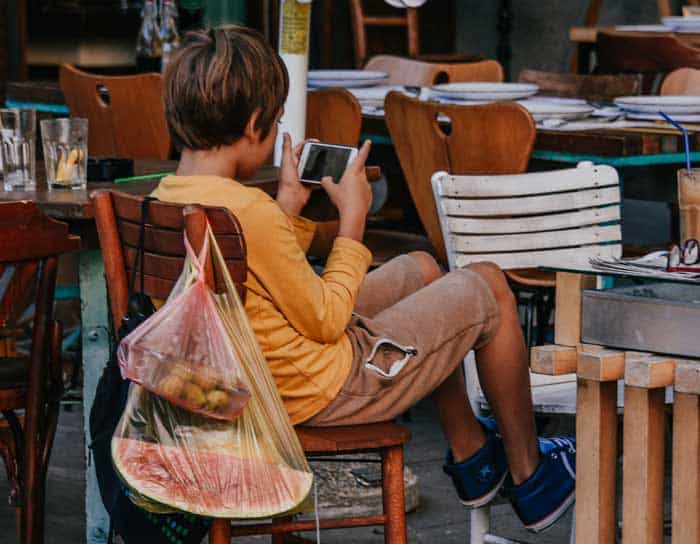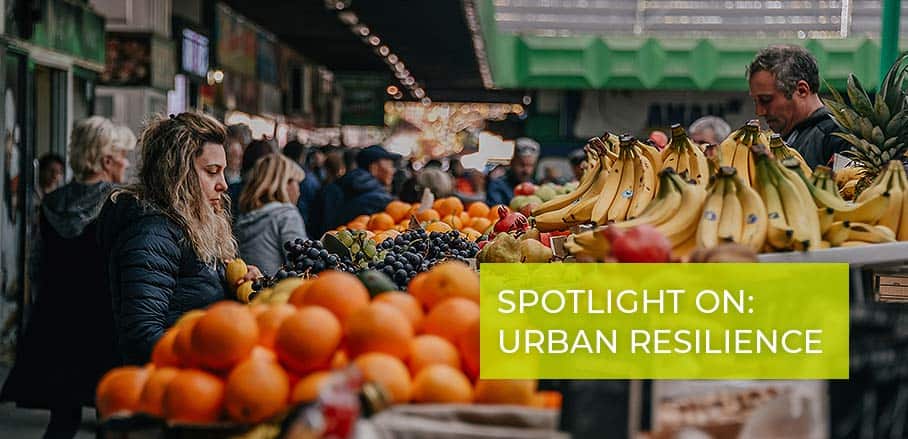The Time is Right: Introducing Effective Food Waste Management in the City of Belgrade
With thousands of tons of food going to waste every year, Serbia is coming up with solutions to prevent the production of surplus food – and support vulnerable groups with the surplus that is generated anyway.
When welcoming guests in Serbia, it is considered a sign of a good host to invite to an ample meal. In this country, and the entire Western Balkans, eating in abundance means eating well. Taking into account that the largest country of the former Socialist Federal Republic of Yugoslavia (SFRY) has not established a food waste management system, an issue arises: While large quantities of surplus food are generated in all groups of the population, there is no system to redirect that food towards those social groups urgently in need for food.
It is estimated that annually as much as 770,000 tons of food are wasted in Serbia – a questionable luxury in a country whose citizens are yet to reach an average monthly salary of 500 Euros.

Food insecurity affects especially the urban poor, the elderly and other vulnerable groups – street scene in Belgrade, Serbia (2019) © Rea Mucović
Troubles begin with the fact that there is no accurate information on how much food is unnecessarily produced and wasted; one is left to estimate. Take, for example the capital Belgrade, inhabited by one fourth of Serbia’s total population, that generates 550,000 tons of municipal waste annually. It is commonly estimated that out of this amount, 30 per cent is food waste, leaving one to assume that this amounts to about 165,000 tons. It is also known that, in public sector kitchens alone, some 200 kilograms of meals are prepared daily in Belgrade. But, how much of each meal ends up in landfills?
Habits, Not Laws
‘There is this habit of buying more food than needed, while restaurants fight competition by increasing portions, not quality’, says Professor Goran Vujić from the Centre of Excellence for Circular Economy.
‘Reasons for the absence of a food management system in Serbia need to be sought in habits and family traditions rather than the legal framework. An average Serbian family wastes a monthly salary on discarded food’, says Siniša Mitrović, Head of the Centre for Circular Economy at the Chamber of Commerce and Industry of Serbia (CCIS).
In absence of data, for this issue, we need to rely on estimates by experts. According to them, about 90 per cent of total waste still ends up landfilled. Food arrives in non-sanitary landfills, and, in time, emits large quantities of greenhouse gas emissions. A portion of this food is used as animal feed, although it would be good enough for reuse by humans, and only a minor amount is taken over for proper waste treatment in municipal facilities.
Predrag Simić from the Ministry of Environmental Protection warns that ‘when something has become waste, it has become an issue. Something needs to be done before food becomes waste’.
Mapping Waste, Preventing Waste
In this crucial moment, the city of Belgrade is about to introduce a voluntary scheme for sustainable food waste management. The first step is to map the largest generators of food waste in the city. Based on this data, a representative sample will be formed. With it, a precise assessment for the whole of Belgrade will be conducted, displaying when, which type, and what quantity of food waste is generated in the city. A digital platform, accessible to all actors within the food value chain through mobile applications, will consolidate and update all data obtained.

Teaching the youth about healthy food with modern technology – local food market in Belgrade, Serbia (2019) © Rea Mucović
‘Research shows that in the Serbian city of Novi Sad, out of 60 people who rummage through a waste container, as much as 30 per cent look for food. However, even though these citizens are very poor, most of them have mobile phones, so this is how they can get information about where they can find food’, says Professor Vujić.
The ‘Food Shifters’ project firstly aims at minimising unnecessary generation of surplus food. That is why the development of mapping applications will be accompanied by training for retailers, restaurants, catering businesses, et cetera, on how to prevent food wasting in the first place. When such surplus has already been generated, the aim is to redirect a part of it to social groups in need of food, and to allow for proper treatment of the other, non-avoidable part of food waste.
Redistributing Food to Vulnerable Groups
Such adequate and systematic food waste management can not only reduce emissions of greenhouse gases, but also alleviate redistribution of valuable resources, that is to improve the social situation of the most vulnerable groups of society. Especially female victims of violence could benefit from the food redistribution system. They constitute a significantly large vulnerable group of Serbian population:
‘Each woman in Serbia has experienced some kind of violence at least once in her life. It may be verbal, psychological, or sexual violence, or being thrown comments at streets’, says Anđela Čeh, activist of the Association ‘Osnažena’, which offers support to women victims of violence.
Their vulnerability is further increased when they do not have access to a reliable source of food. There are reasons to suggest that women face several issues when they need to collect food by themselves: It demonstrates their social situation; they often feel embarrassed and unsafe. If surplus food would be collected at official locations, the women could access food in a safe space provided by an organisation which they know and trust.
The adequate models of redistribution of collected food to vulnerable women will have to be a topic for research: whether the food will be redistributed directly to them or through different organisations such as Red Cross, food banks, women organisations, drop-in centres, or others.
From Linear to Circular Economy
Experts from the Centre for Excellence for Circular Economy say that similar projects are currently implemented in several cities across the world, for example in New York, Copenhagen, and Bern. The moment is right for the municipality of Belgrade to tackle this topic, as Serbia is just about to pass its Waste Management Strategy and its new Law on Waste Management. Hence, the timing is perfect to gain local experience and define a sustainable proposal as to how to solve this important issue prior to the drafting of the legal text at national level.
‘Setting the public in motion so that everyone recognises potential benefits, but also demonstrating personal capacity and responsibility in climate change action, may be the biggest impact of this project. Communicating our message well might be the most important task for the project’s success’, says Siniša Mitrović from CCIS.
Professor Goran Vujić thinks that it is time for change: ‘We want to shift from linear to circular economy’.
